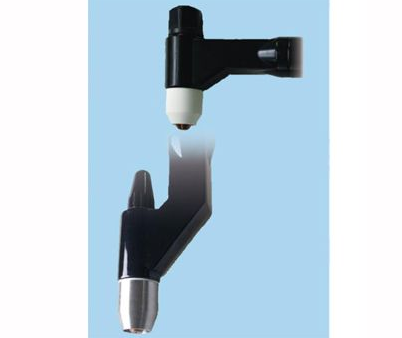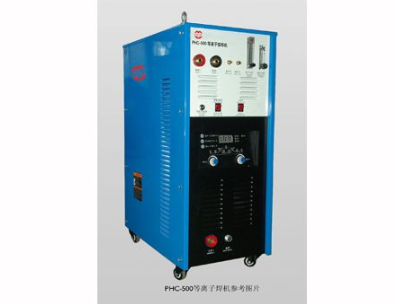Plasma cutting, sometimes referred to as plasma arc cutting, is a melting process. In this process, a jet of ionised gas at temperatures in excess of 20,000°C is used to melt the material and expel it from the kerf.
During plasma cutting, an electric arc is generated between the electrode and the workpiece (or cathode and anode respectively). The electrode is then embedded in a cooled gas nozzle, which confines the arc and produces a narrow, high speed, high temperature plasma jet.
Plasma is actually a gas
Some people think that the plasma used in plasma arc welding is a liquid, but this is not necessarily true. It is actually a gas. When an electric current is activated, the plasma gas is ionised, which increases its conductivity. The current is then free to flow through the newly ionised gas plasma.
The origins of plasma arc welding can be traced back to the 1950s, during which the process was pioneered by American engineer Robert Gage. At the time, there was no effective welding process that could cut both thin and thick metals, and Gage's new invention solved this problem by introducing a versatile new welding process. It was called plasma arc welding and allowed for a faster and more efficient welding and cutting process in the manufacturing industry.

Plasma Arc Welding Torch
How does plasma cutting work?
As the plasma jet forms and strikes the workpiece, it compounds, causing the gas to change back to its original state and emitting intense heat throughout the process. This heat melts the metal and ejects it out of the kerf with the gas stream.
Plasma cutting can cut a wide range of conductive alloys such as plain carbon/stainless steel, aluminium and aluminium alloys, titanium and nickel alloys. The technology was originally created to cut materials that could not be cut by the oxy-fuel process.
AC and DC plasma arc welding guns available
Not all plasma arc welding torches rely on direct current (DC). Some switch to alternating current (AC). However, of the two types, DC torches are the most common. They produce less noise, have better control, consume less electrode material and are more energy efficient than AC torches.

Plasma Arc Welding Machine
Up to 50,000 degrees Fahrenheit
Depending on the particular type of plasma torch used and its settings, it can reach up to 50,000 degrees Fahrenheit. From this figure, SMAW temperatures typically reach only 10,000 degrees Fahrenheit. Therefore, it is safe to say that plasma arc welding is approximately five times hotter than other more conventional welding processes.
The plasma used in plasma arc welding is not only hot, but it is also fast. When the plasma leaves the nozzle of the torch it reaches a speed almost equal to the speed of sound (Mach 1). The combination of heat and speed allows the plasma to melt most materials including aluminium, copper, steel, brass, iron etc.
Advantages of Plasma Arc Welding
The advantages of plasma arc welding are as follows.
The torch design allows for better control of the arc.
This method provides more freedom to see and control the weld.
Higher heat concentration and plasma jets allow for faster travel speeds.
The high temperature and high heat concentration of the plasma leads to a locked hole effect.
This provides complete penetration through the single pass welding of many joints.
The heat affected zone is smaller compared to GTAW (gas tungsten shielded welding).
It uses less current input than another welding process.







